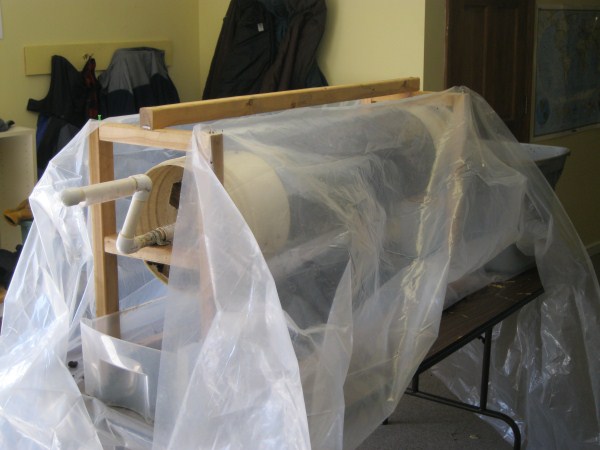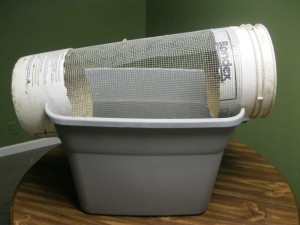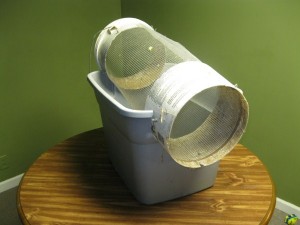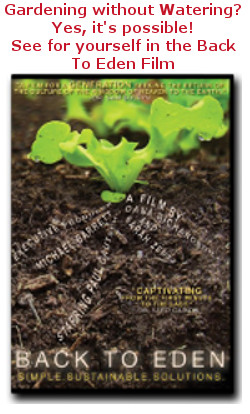Your worms have been working away and your bin is now full of rich compost. It’s time to harvest the compost and separate out the worms. What’s the best way to do that?
There are several ways I’ve tried which include the
- table and light method,
- stacked bin method, and
- compost sifter method.
I have a video below of my favorite method, the compost sifter method. But let me first describe the other two methods so you will have an idea of how to use them if you’re not ready to make a sifter.
Table and Light Method:
The table and light method is the fairly simple. It entails a table and a light source, either sunlight or an overhead artificial light. Follow these steps using the table and light method
- Set up a table under the light source (daylight is best).
- Take compost, worms and all, out of the bin and place them in several, separate medium piles around the table top.
- The worms will work their way down into the pile away from the light.
- Scoop off the top layers of the piles, worm free compost, and place into your compost bucket.
- Repeat this process until you have small piles with mostly worms left.
- Combine these smaller piles together and then repeat the process again until you have harvested all the compost and separated the worms.
The good thing about this method is that you don’t need to make anything special to harvest the worms. The bad thing about this it is that it takes a lot of time to wait for the worms to move down the piles and then rearrange the smaller piles, especially if you have a lot of compost to harvest.
I used this method when I first started and quickly began looking for a better way.
Stacked Bin Method:
The second method I tried was the stacked bin method. In this method, I made bigger holes in the bottom of the bins and then stacked one bin on the top of the compost surface of another finished bin. The idea is that you stop feeding the worms in the finished bin and then provide food in the new stacked bin. The worms would then work their way into the new bin to find the food.
I believe some folks have had success with this type of method, possibly using different types of bins. There are worm bins on the market that do just this process. I found this method didn’t work very well for me.
Compost Sifter Method:
Next, I tried a smaller version of what I use now. It was a 5 gallon bucket, cut in half, and connected by two-foot-wide hardware cloth. You place the compost in this unit and manually turn the sifter in a bin that has the sides cut out at an angle. As you turn the sifter, the compost goes into the bin and the worms come out the end.
This worked good for very small amounts but was too cumbersome for larger quantities.
That’s when I found the next design that I have used for several years. I found it from a man off YouTube, but cannot find him now to acknowledge his work. It was simple to make, very easy to use and will sift large quantities of compost in a short time.
This short video shows how it works.
What methods have worked for you?





